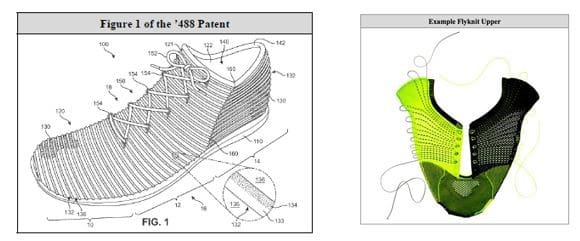In May, Nike sued Puma for alleged infringement of seven of Nike’s footwear-related utility patents.
Nike’s suit was based in part on its Flyknit technology, introduced in 2012, including “a featherweight, form-fitting, and virtually seamless sock-like upper, scientifically tuned to provide areas of support, flexibility, and breathability where athletes need them most.”
The Flyknit technology is covered by more than 300 utility patents.
Nike claimed that Puma’s Proknit shoe infringed the Nike Flyknit patents.
Nike also claimed that Puma’s shoes infringed other Nike patents including the Nike Air technology introduced in 1987 and since covered by more than 800 patents.
Puma argued that the Flyknit patents didn’t cover patentable subject matter and moved to dismiss the case.
The court applied the two-step analytical framework of the US Supreme Court’s decision in Alice Corp. Pty. Ltd. v. CLS Bank Int’l.
Under this test, a court must consider:
- whether patent claims are directed to one of four categories of patentable subject matter or are only abstract ideas; and
- if the patent claims are directed to an abstract idea, whether the claims include an “inventive concept” that ensures the patent adds significantly to current practice.
The court found that the Nike patents were directed to patentable subject matter – shoes and their component parts.
The court also found that the patents included “inventive concepts” that increased the efficiency of the shoe knitting process and reduced waste.
The court thus declined Puma’s motion to dismiss.
Although utility patents are more commonly associated with high tech devices, as this case demonstrates there can also be a dense patent thicket around something as seemingly simple as a shoe.
The case is Nike Inc. v. Puma North America Inc., Case No.1:18-cv-10876.


